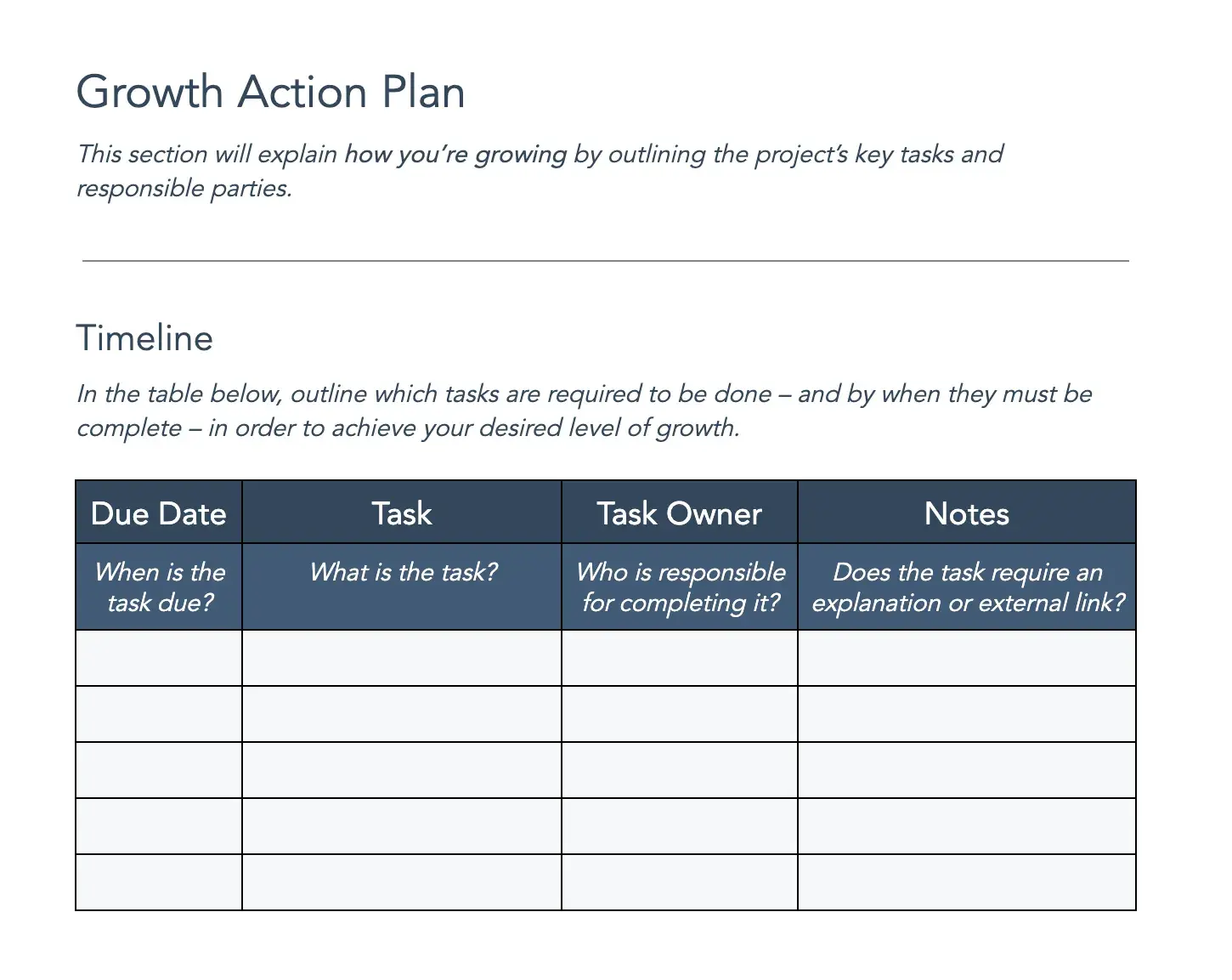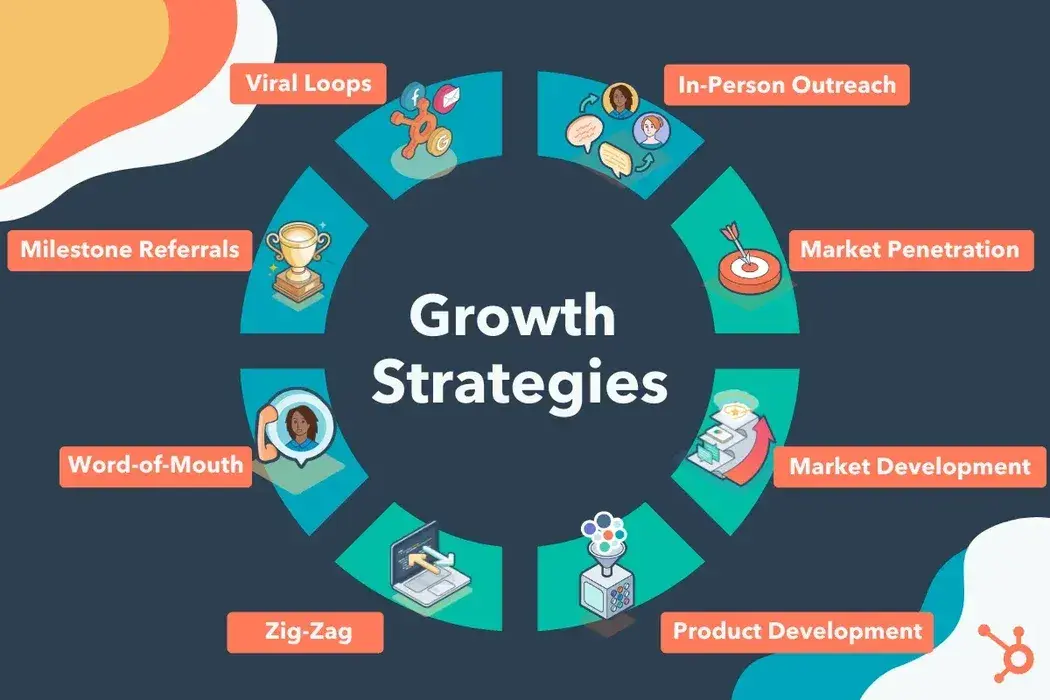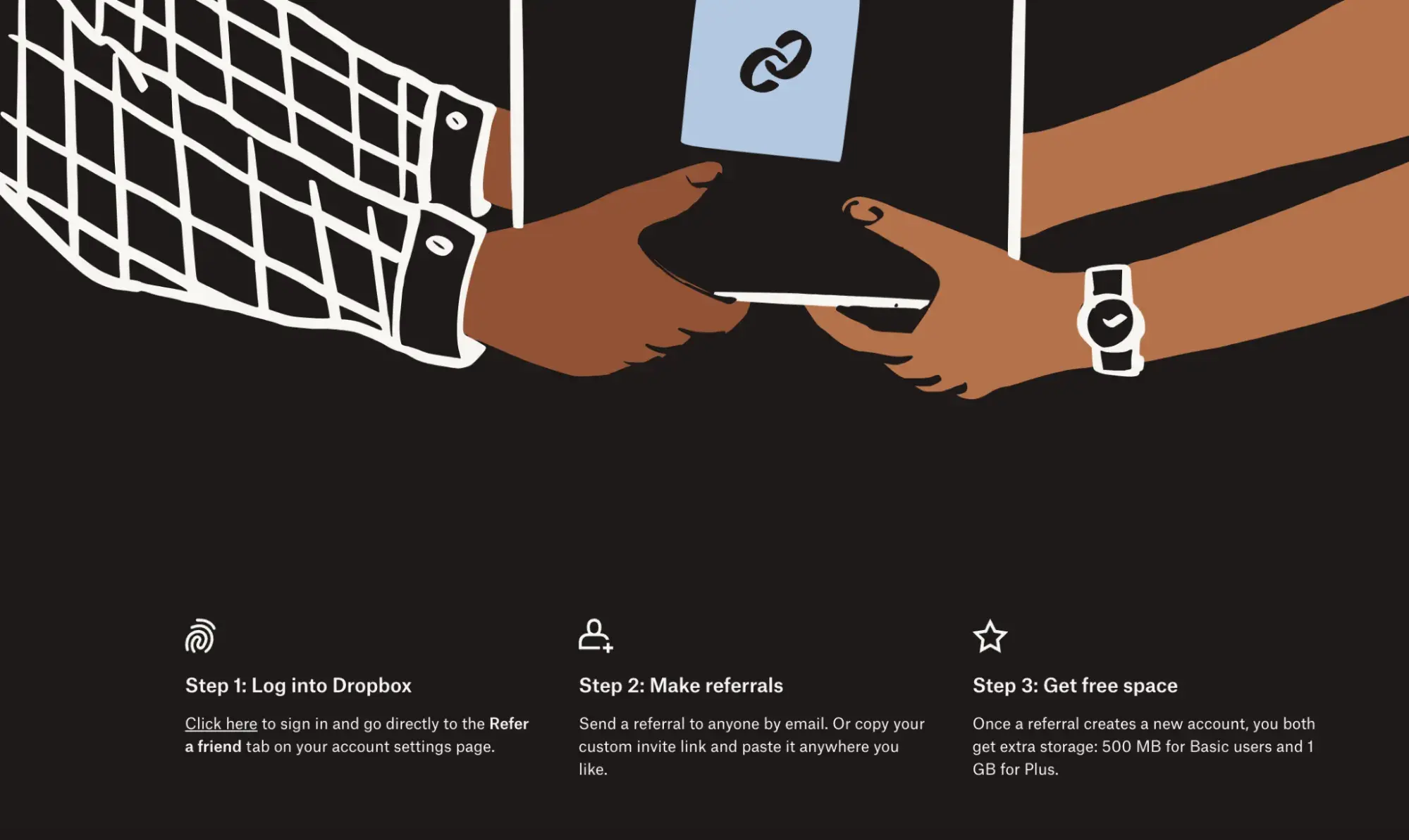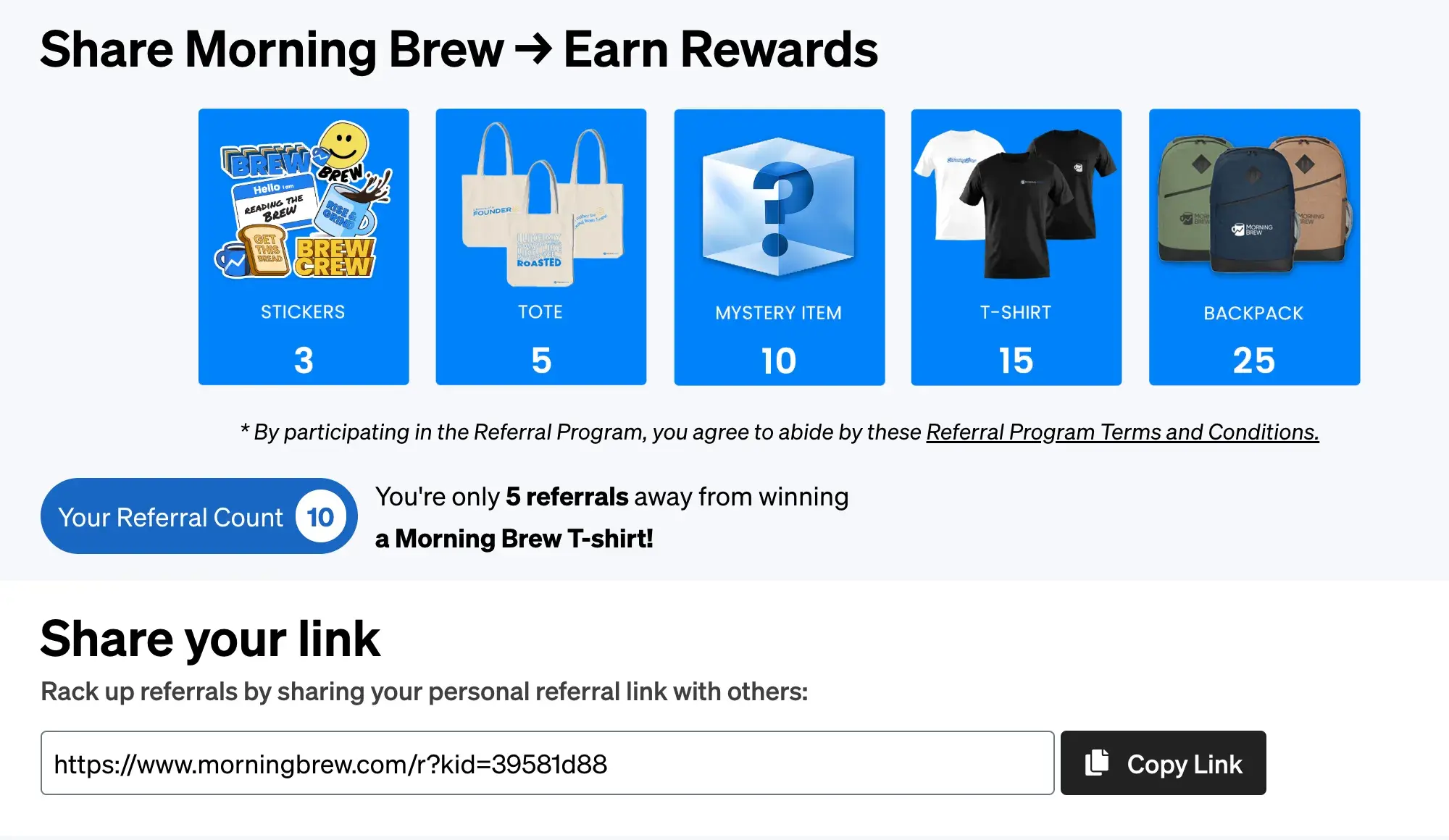Table of Contents
- Business Growth
- Business Growth Strategy
- How to Grow a Company Successfully
- Growth Strategy Examples
- Why You Need a Business Growth Plan
- Types of Business Growth
- Types of Business Growth Strategies
- The Key to Growing Your Business
Why You Need a Business Growth Plan
So why do I think building a business growth plan is so crucial, even for established businesses?
There are so many reasons, but here are three that apply to almost all companies at some point:
- Funding. Functionally, most businesses are always on the lookout for investors. You’ll have an advantage if you present a solid growth plan to convince them. Most expect it.
- Insurance. Growth creates financial padding, like a forcefield to protect your business when unexpected issues crop up. The economic upheaval for brick-and-mortar businesses in 2020 is a perfect example.
- Credibility and creditability. For brand new businesses, getting a loan and making sure you can repay your bank is at the top of the priority list. There’s no real profit until that debt is managed. Having a growth plan will not only help you secure a business loan, but it will also be there to refer to so you’ll know what to do to continue making your payments.
Business Growth
Business growth is a stage where an organization experiences unprecedented and sustained increases in market reach and profit avenues. This can happen when a company increases revenue, produces more products or services, or expands its customer base.
For the majority of businesses, growth is the main objective. Business decisions are often made based on what would contribute to the company’s continued growth and overall success.
Several methods can facilitate growth, which I’ll explain more about below.
Types of Business Growth
As a business owner, you’ll have several avenues for growth. Business growth can be broken down into the following categories:
1. Organic
With organic growth, a company expands through its operations using its internal resources. This is in contrast to seeking external resources to facilitate growth.
An example of organic growth is making production more efficient so you can produce more within a shorter time frame. This means more sales with half the effort.
A perk of using organic growth is that it relies on self-sufficiency and avoids taking on debt. Additionally, the increased revenue created from organic growth can help fund more strategic growth methods later on.
Example: Organic growth could be putting some of your revenue aside to purchase a second machine. A second machine would double your production without debt. This increases your ability to take on larger orders. This way, you create more revenue to invest in a third machine or fund another growth strategy.
2. Strategic
Strategic growth involves developing initiatives that will help your business grow long-term. An example of strategic growth could be creating a new product or a market strategy to target a new audience.
Strategic initiatives often require significant resources and funding. Businesses usually take an organic approach first, hoping their efforts will generate enough capital to invest in future strategic growth initiatives.
Pro tip: Strategic growth can be a major endeavor, depending on the size of your business. Be prepared to learn a lot, work hard, and see slow development. Or, hire a skilled employee to work hard at it for quicker results.
Another option is to spend the money on a user-friendly platform you or an employee can manage. Strategic growth is easily a full-time job for anyone, if not for a team of professionals.
3. Internal
An internal growth strategy helps optimize internal business processes to increase revenue. This strategy relies on companies using their own internal resources.
Internal growth strategy is all about using existing resources in the most purposeful way possible.
Internal growth can be challenging because it forces companies to look at how their processes can be improved for efficiency rather than focusing on external factors like entering new markets to facilitate growth.
Example: Cutting wasteful spending and running a leaner operation by automating sales with AI is an example of internal growth.
4. Mergers, Partnerships, Acquisitions
Although riskier than the other growth types, mergers, partnerships, and acquisitions can come with high rewards.
There’s strength in numbers. A well-executed merger, partnership, or acquisition can help your business break into a new market. You can also expand your customer base or increase your products and services.
Business Growth Strategy
A growth strategy is a plan that companies make to expand their business in a specific aspect, such as yearly revenue, number of customers, or number of products. Specific growth strategies can include adding new locations, investing in customer acquisition, or expanding a product line.
A company’s industry and target market influence its chosen growth strategies.
To create a strategy, consider the available options and strategically work them into your business plan. Depending on the kind of company you’re building, your growth strategy might include aspects like:
- Adding new locations.
- Investing in customer acquisition.
- Franchising opportunities.
- Product line expansions.
- Selling products online across multiple platforms.
Pro tip: Your particular industry and target market will influence your decisions, but it’s almost universally true that new customer acquisition will play a sizable role.
That said, you can adopt different types of overarching growth strategies before making a specific choice, such as adding new locations. Let’s take a look.
Types of Business Growth Strategies
There are several general growth strategies that your organization can pursue. Some strategies may work in tandem. For instance, a customer and market growth strategy will typically go hand-in-hand.
Revenue Growth Strategy
A revenue growth strategy is an organization’s plan to increase revenue over a time period, such as year-over-year. Businesses pursuing a revenue growth strategy may:
- Monitor cash flow.
- Leverage sales forecasting reports.
- Analyze current market trends.
- Diminish customer acquisition costs.
- Pursue strategic partnerships with other businesses to improve the bottom line.
Specific revenue growth tactics may include:
- Investing in sales training programs to boost close rates.
- Leveraging technology to improve sales forecasting reports.
- Using lower-cost marketing strategies to lower customer acquisition costs.
- Continuing to train customer service reps to increase customer retention.
- Partnering with another company to promote your products and services.
Pro tip: Revenue for the sake of personal income is often essential at the start of a business, and end of a business to use as enticement for selling the company. While you look to the future with your company running, it’s wise to use revenue growth toward continued overall business growth.
Customer Growth Strategy
A customer growth strategy is an organization’s plan to boost new customer acquisitions over a time period, such as month-over-month.
Businesses pursuing a customer growth strategy may be more open to making large strategic investments, as long as the investments lead to greater customer acquisitions.
For this strategy, you might track:
- Customer churn rates.
- Calculate customer lifetime value (CLV).
- Leverage pricing strategies to attract more customers.
With new customer sign-ups as the North Star metric, you might spend more on marketing, sales, and CX.
Specific customer growth tactics may include:
- Investing in your marketing and sales organization’s headcount.
- Increasing advertising and marketing spend.
- Opening new locations in a promising market you’ve not yet reached.
- Adding new product lines and services.
- Adopting a discount or freemium pricing strategy.
- Tracking metrics such as churn rates, CLV, and monthly recurring revenue (MRR).
Pro tip: Remember that it’s about people. Market research tools such as trend monitoring can help keep you aware of what your target audiences are genuinely interested in. This way, you can personalize your marketing to meet their needs.
Marketing Growth Strategy
A marketing growth strategy is similar, but not the same as, a market development strategy. This strategy is an organization’s plan to increase its total addressable market (TAM) and increase existing market share.
Businesses pursuing a marketing growth strategy will research different verticals, such as:
- Customer types.
- Audiences.
- Regions.
This helps give brands a measure of the viability of a market expansion.
Specific marketing growth tactics may include:
- Rebranding the business to appeal to a new audience.
- Launching new products to appeal to buyers in a different market.
- Opening new locations in other regions.
- Adopting a different marketing strategy, like local marketing or event marketing, to appeal to other markets.
- Becoming a franchisor so that individual business owners can buy franchises from you.
Pro tip: The idea here is to get a bigger slice of the pie by growing into already established markets. Instead of finding new markets, this strategy finds space in existing ones.
How to Grow a Company Successfully
- Use a growth strategy template.
- Choose your targeted area of growth.
- Conduct market and industry research.
- Set growth goals.
- Plan your course of action.
- Determine your growth tools and requirements.
- Execute your plan.
1. Use a growth strategy template [Free Tool].

Download HubSpot’s Free Business Growth Strategy Template
With any new venture, you need to document your steps. I recommend downloading this free Growth Strategy Template and working off the included section prompts to outline your intended process for growth in your organization.
New business ventures are 260% more likely to launch if they have a business plan and 30% more likely to grow when they have a plan for it. You can still run, but plan your route first!
2. Choose your targeted area of growth.
Your business growth plan should hone in on specific areas of growth. Common focuses of strategic growth initiatives might include:
- Growth in employee headcount.
- Expansion of current office, retail, or warehouse space.
- The addition of new locations or branches of your business.
- Expansion into new regions, locations, cities, or countries.
- The addition of new products and services.
- Expanding purchase locations, like in-store or online.
- Growth in revenue and/or profit.
- Growth of customer base.
- Customer acquisition rate.
Your growth plan may encompass more than one of the initiatives outlined above, which makes sense — the best growth doesn’t happen in a vacuum. For example, growing your unit sales will result in revenue growth — and possibly additional locations and headcount to support the increased sales.
Pro tip: Geographical spread is popular right now. In a 2023 Forbes survey, 79% of business owners focused on expanding into new geographies. Of small brick-and-mortar and online sellers, 90% want to do the same. Expanding your geographic footprint might be a good option!
3. Conduct market and industry research.
Researching the state of your industry is the best way to determine if your desired growth is both necessary and feasible. Conduct research by:
- Running surveys.
- Hosting focus groups with existing and potential customers.
- Digging into existing industry research.
The knowledge and facts you uncover in this step will shape the expectations and growth goals for this project to better determine a timeline, budget, and ultimate goal.
4. Set growth goals.
The next step is to determine how much you’ll be growing. To do that, you’ll need to set goals.
These goals should be based on your endgame aspirations of where you ideally want your organization to be. Your goals should also be achievable and realistic, which is why setting a goal based on industry research is so important.
Take the steps to quantify your goals in terms of metrics and timeline. For example, your goal may be to “grow sales by 30% quarter-over-quarter for the next three years” instead of just “increasing sales.”
Pro tip: Try to be SMART about your goals. Make them Specific, Measurable, Achievable, Relevant, and Timely based on the results of your market research.
5. Plan your course of action.
Next, outline how you’ll achieve your growth goals with a detailed growth strategy. Again, I suggest writing out a detailed growth strategy plan to gain the understanding and buy-in of your team.

This action plan should contain a list of:
- Action items.
- Deadlines.
- Teams or persons responsible.
- Resources for attaining your growth goal.
6. Determine your growth tools and requirements.
The last step before acting on your plan is determining any requirements your team will need through the process. These specific resources will help you meet your growth goals faster and more accurately. Examples might include:
- Funding. Organizations may need a capital investment or an internal budget allocation to see this project through.
- Tools & Software. Consider what technological resources may be needed to expedite and/or gain insights from the growth process.
- Services. Growth may be better achieved with the help of consultants, designers, or planners in a specific field.
7. Execute your plan.
With all of your planning, resourcing, and goal-setting complete, you’re ready to execute your business growth plan and deliver results for the company.
Make sure to:
- Holding your stakeholders accountable.
- Keep the line of communication open.
- Compare initial results to your forecasted growth goals to see if your projected results are still achievable.
- Adjust, if necessary.
Your growth plan and the tactics you leverage will ultimately be specific to your business, but there are some universal strategies you can implement when getting started.
Growth Strategy Examples
- Viral Loops
- Milestone Referrals
- Word-of-Mouth
- The 'When They Zig, We Zag' Approach
- In-Person Outreach
- Market Penetration
- Market Development
- Product Development
- Growth Alliances
- Acquisitions
- Organic Growth
- Social Media
- Excellent Customer Service
Companies can implement different growth strategies to expand a business and its revenue. Check out this list of company growth strategy examples.

1. Viral Loops
Some growth strategies are tailored to be completely self-sustainable. They require an initial push but ultimately rely primarily (if not solely) on users’ enthusiasm to keep them going. One strategy that fits that bill is the viral loop.
The basic premise of a viral loop is straightforward:
- Someone tries your product.
- They're offered a valuable incentive to share it with others.
- They accept and share with their network.
- New users sign up, see the incentive for themselves, and share with their networks.
- Repeat.
Ideally, your incentive will be compelling enough for users to actively and enthusiastically encourage their friends and family to get on board. At its best, a viral loop is a self-perpetuating acquisition machine, operating 24/7.
That said, viral loops are not guaranteed to go viral. And they’ve become less effective as they’ve become more commonplace. However, the potential is still there.
Part of the appeal is that the viral loop flips the traditional funnel upside-down:

What we like: Instead of needing as many leads as possible at the top, a viral loop funnel requires just one satisfied user to share with others. The system continues growing as long as every referral results in at least 1.1 new users.
Viral Loop Example: Dropbox

Dropbox is one product I use that uses viral loops as a growth strategy. Here’s how I fit into the company’s viral loop:
- I tried Dropbox as a cloud storage solution.
- I saw that I could get 500MB of free space for each successful Dropbox referral.
- I sent a referral link to my friends.
- Some of them signed up and used the same referral program with their networks.
The incentive is strong enough to drive new people to sign up, increasing the number of Dropbox users as a whole.
2. Milestone Referrals
The milestone referral model is similar to the viral loop. It relies on incentives to kickstart and sustain it. But milestone referrals add a more intricate, progressive element to the process.
Companies that leverage viral loops generally offer a flat, consistent offer for individual referrals. Milestone referrals, though, offer rewards for hitting specific benchmarks.
In many cases, “milestones” are metrics like the number of referred friends.
A business might include different or increasingly enticing incentives with more referrals, iinstead of a fixed incentive for each referral. For example, if a customer refers ten friends, they’ll receive a better reward compared to those who only refer two new people.
What we like: This strategy adds an engaging element to the referral process. When done right, milestone referrals are simple to share with relatively straightforward objectives and enticing, tangible products as rewards.
Milestone Referral Example: Morning Brew
I’m a huge Morning Brew fan. In fact, I start my day with the Daily Brew and my cup of coffee. However, I didn’t know the site had a milestone referral program until I began researching for this article.

The more people who sign up using my referral code, the better swag I get. Three referrals get me a sticker pack. Five earn me a tote bag. And with 25 referrals, I’ll get mailed a backpack. This system gamifies referral for a product that’s free, making people more likely to share Morning brew.
3. Word-of-Mouth
Word-of-mouth is organic and effective. Recommendations from friends and family are some of the most powerful incentives for consumers to purchase or try a product or service.
The secret of word-of-mouth’s effectiveness lies in a deeply rooted psychological bias: we think others know best.
That’s why social proof is so effective. Social proof is central to successful sales copywriting and broader content marketing efforts because it says, “Hey, people trust us.”
Businesses know in today's customer-driven world, a single negative blog or social media post can compromise an entire marketing effort.
Pete Blackshaw, the father of digital word-of-mouth growth, says, “Satisfied customers tell three friends; angry customers tell 3,000.”
Pro tip: The key to word-of-mouth is to focus on a positive user experience. You need to grow a base of satisfied customers and sustain the wave of loyal feedback that comes with it. With this method, you have to focus on delivering a spectacular user experience, and users will spread the word for you.
Word of Mouth Example: Salud

When I felt the early stages of a scratchy throat, I used to reach for Vitamin C tablets or mix-in powders. However, a friend recently brought over a few packets of Salud, a brand of beverage mixes that have hydration and immunity beverages.
I loved how these packets tasted, inspired by Latin flavors common in aguas frescas. Now, I keep a few in my cabinet. And, I’m not the only one in my social circle with Salud. I’ve noticed it in my other friends’ cabinets, showing the power of word of mouth.
4. The “When They Zig, We Zag” Approach
Sometimes, a company's best growth strategy is to offer a unique experience that sets it apart from other businesses in its space.
Say your company developed an app for transitioning playlists between music streaming apps. Assume you have a few competitors who all generate revenue through ads and paid subscriptions — both of which frustrate users.
In that case, you might be best off trying to shed some of the baggage that customers run into trouble with when using your competitors' programs. If your service is paid, you could consider offering a free trial of an ad-free experience from the start.
What we like: The point here is that there's often a lot of value and opportunity in differentiating yourself. If you can “zig when they zag,” you can capture consumers’ attention and capitalize on their shifting interests.
Zig Zag Example: Octave

Online mental health is a space with a lot of competition. BetterHelp, Talkspace, and Modern Health all offer online counseling sessions. However, when a friend of mine started talking about Octave, my ears perked up.
Octave allows users to put in their insurance information and find therapists who are in-network for their healthcare plans. You don’t have to pay any additional fees to use the platform. Octave helped my friend find a therapist who actually accepts her insurance without a premium fee or surcharge.
This insurance angle differentiates Octave from digital mental health competitors. Its focus on mental health is more specific than doctor search sites like Zocdoc, showing the power of differentiation as a growth engine.
5. In-Person Outreach
Adding a human element to your growth strategy can help set things in motion for your business, and it’s highly effective.
Prospects are often receptive to a personal approach. And nothing is more personal than immediate, face-to-face interactions. Personally interacting with potential customers can be a great way to get your business the traction it needs to get going.
This could mean:
- Hosting or sponsoring events.
- Attending conferences relevant to your space.
- Hiring brand ambassadors.
In reality, it’s any other way to directly and strategically reach out to your target demographic in person.
What we like: With consumers used to being saturated with ads, in-person outreach shakes things up and will stand out to them.
In-Person Outreach Example: Conferences
If you want an example of in-person outreach in action, look no further than Inbound, HubSpot’s annual conference. Sponsors of the event have booths where they can demo products for interested business leaders. They can also give out swag and answer questions, getting in front of potential customers.
6. Market Penetration
Competition is a necessary part of business, but it can be tough going.
Imagine that two companies in the same industry are targeting the same consumers. Typically, whatever customers Business A has, Business B does not. Market penetration is a strategy that builds off of this tug-of-war.
Market penetration increases the market share of a product within the given industry. Market share refers to the percentage of total sales in an industry generated by a company.
Market Penetration Example: Coca-Cola
Coca-Cola, the most popular carbonated beverage in the United States, has a 42.8% market share. If competitors like Pepsi and Sprite wanted to increase market penetration, they would need to increase market share. This increase would imply that they are acquiring customers who previously bought Coca-Cola or other carbonated beverage brands.
Pro tip: While lowering prices and advertising are two costly yet effective tactics to increase market share, they are part of businesses' methods for overall sales and customer retention.
7. Market Development
If a company feels as if they have plateaued and its current market no longer has room for growth, it might switch strategies from market penetration to market development.
Market development strategies help businesses to tap into a new markets and territories by creating new products or finding innovatise uses for a project.
Pro tip: Brainstorm adjacent products or services you could offer to expand into new markets.
Market Penetration Example: Uber
Uber launched in 2009 as a rideshare company, allowing people with cars to pickup passengers as a gig. In 2014, the company expanded its offerings with UberEats, allowing customers to order food and have it delivered — even if the restaurant does not directly offer delivery. Two years later, the company launched Uber Freight, an app that matches cargo carriers with shippers.
This growth is still underway today. In 2025, Uber expanded
- A program that serves teen riders to 26 new countries.
- A Shopper Pick & Pack program that allows gig workers to shop for orders and hand off completed bags to couriers.
- A Broker Access capacity-as-a-service solution that gives freight brokers direct access to the company’s technology platform.
The company started as a way to get passengers to their destinations. Uber expanded their idea and has become one of the biggest names in mobility today.
8. Product Development
For growth, many businesses need to introduce something new. Product development allows companies to attract new customers and retain existing ones by creating a new product or enhancing an existing one.
Pro tip: While this is one of the most common ways a business grows, be sure you’re listening to your customers so you know what they’re looking for.
Product Development Example: Apple
Tech giant Apple doesn’t just make a product and rest on its laurels. The company invests major time and money into product development. According to Statista, the company spent $31.4 billion on research and development in 2024. The goal here is to improve products so people stay loyal to the brand or add another Apple device to their tech stack.
9. Growth Alliances
Growth alliances are strategic collaborations between companies. They further the growth goals of the involved parties.
Pro tip: To make a growth alliance, look for an adjacent business that already serves your target audience (and vice versa) to benefit you both.
Growth Alliances Example: Sephora and Ulta
Sephora partnered with retailer Kohl’s in 2020, starting a growth alliance that benefitted both brands. Sephora gets to have products in new locations, reaching busy shoppers in an older age demographic who may not have time to visit their store. Kohl’s brings makeup lovers into the store, who can then shop for other products at the retailer.
In 2022, we also saw Target forming a growth alliance with Ulta Beauty to create dedicated shop space for Ulta in at least 800 stores. The following year, Fenty Beauty teamed up with Ulta Beauty at Target. Ulta Beauty and Fenty can get their products in front of shoppers at a major retailer. Target has the benefit of becoming an even more dominant one-stop-shop for customers.
10. Acquisitions
Companies can use an acquisition strategy to promote growth. By acquiring other businesses, companies expand their operations by creating new products or expanding into a new industry.
Acquisitions offer significant benefits to companies, such as:
- Allowing for faster growth.
- Gaining access to more customers.
- Reduced lower business risk.
- And more.
What we like: This is an easy (though sometimes expensive) way to grow since the products or services you acquire are already established and come with a customer base.
Acquisitions Example: Procter & Gamble
Founded in 1837, Procter & Gamble is a consumer goods company known for its acquisitions. It initially started in soaps and candles but currently has 65 acquired companies, allowing it to expand into different markets.
The list includes Pampers, Tide, Bounty, Tampax, Old Spice, and more. Although its sales dipped between 2016 and 2019, Procter & Gamble’s net sales for 2023 were $84 billion, its best year within the last decade.
11. Organic Growth
Organic growth is the most ideal business growth strategy. It could look like:
- Focusing on SEO.
- Developing engaging content.
- Prioritizing advertisements.
Instead of focusing on external growth, organic growth is a sustainable strategy that promotes long-term success.
What we like: Organic growth should always be part of your game plan, even while pursuing other business growth strategies. If your business isn’t growing organically, you’re not doing something right.
Organic Growth Example: Marketing at HubSpot
Looking to see organic growth in action? Well, this blog post and the HubSpot Blog on whole are a part of that strategy. This blog’s SEO team helps identify topics that people are searching for, so writers like me can craft engaging content that brings people into our ecosystem.
The site doesn’t have paid ads, but writers include product mentions and CTAs that point to our product.
12. Leverage Social Media
A strong social media presence can be invaluable to marketing and business growth. You’ll need to establish brand pages on all social media platforms like:
- Instagram.
- Facebook.
- Pinterest.
- TikTok.
- X.
Social media can help you increase engagement with your target audience and make it easier for potential customers to find your brand.
It’s also great for word-of-mouth promotion, as existing customers will likely share your content with their network. There has been a huge upswing in the popularity of using social media influencers as well. The global influencer marketing platform industry is expected to reach $22.2 billion by 2025.
Pro tip: Be where your customers are. Research which social media channels are most popular with your target audience and focus your efforts there.
Social Media Example: Stanley Cup
In 2023, TikTok user danimarielettering posts a video of her car after it caught on fire. She picks up a Stanley Cup in the car’s cup holder. She gives it a shake. There’s still ice jingling against the metal. The TikTok went viral, and the brand gave the video maker a new car.
Stanley continued to ride the social media wave. People began posting videos of their Stanley cup collections and their excitement over new colors of the product hitting the market, showing how social buzz can help you grow.
13. Provide Excellent Customer Service
It can be tempting to focus on acquiring new customers, but maintaining loyalty with your existing customers is just as important. Existing customers already love your brand and may evangelize for you for free.
Providing an excellent customer service experience ensures that you’ll continue to keep the customers you have. Plus, there’s a good chance you’ll reap some high-value referrals, too.
What we like: Customer retention offers one of the best ROIs, so it’s definitely worth investing in. Check out these strategies to keep your customers happy and coming back.
Customer Service Example: AMC Theaters
This is an example that hits close to home. I wanted to see a limited-release movie at a local theater. However, I noticed that the website time showed 10 a.m. instead of 10 p.m., making it the only location with a daytime showing.
I called the theater to see if the posting was a mistake. Turns out it was! The staff had to repost the movie time. However, on my call, I was able to reserve the seats I was eyeing in the previous booking. My problem was resolved with no issue, and I got to keep the best seats in the house.
I’m now loyal to that AMC location after the great service I received, making it my theater of choice.
The Key to Growing Your Business
Controlled, sustainable growth is the key to successful businesses. Industries are constantly changing, and it is the responsibility of companies to adapt to these changes.
Successful companies plan for growth. They work for it. They earn it. So what's your plan?
Editor's note: This post was originally published in March 2020 and has been updated for comprehensiveness.
Business Growth
.png?width=112&height=112&name=Image%20Hackathon%20%E2%80%93%20Vertical%20(56).png)

.png)
![How Entrepreneurs Navigated (& Survived) Recessions [New Data & Expert Tips for Economic Slumps]](https://53.fs1.hubspotusercontent-na1.net/hubfs/53/Copy%20of%20Featured%20Image%20Template%20Backgrounds%20(55).png)

![Grants for Black-Owned Businesses and Other Funding Resources for Black Business Owners [+ Deadlines for 2025]](https://53.fs1.hubspotusercontent-na1.net/hubfs/53/copy%20of%20jade%20walters%20btb%20(41).png)

%20(1)-1.png)

![Here's How to Value a Company [With Examples]](https://53.fs1.hubspotusercontent-na1.net/hubfs/53/Value%20a%20Business%20fi%20(1).png)


